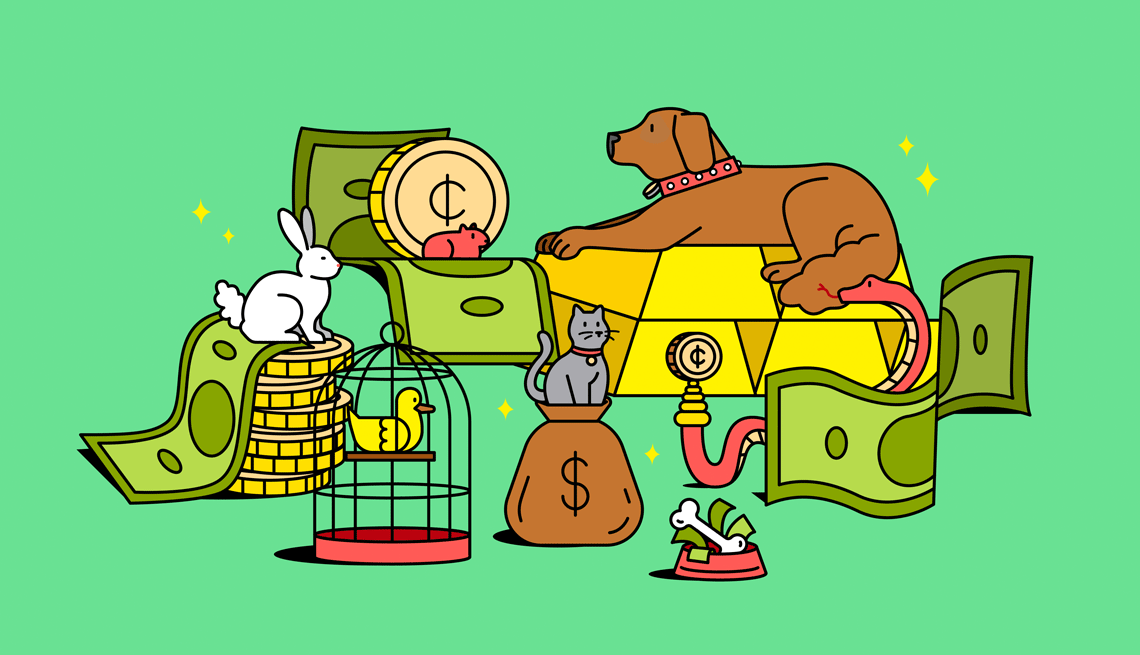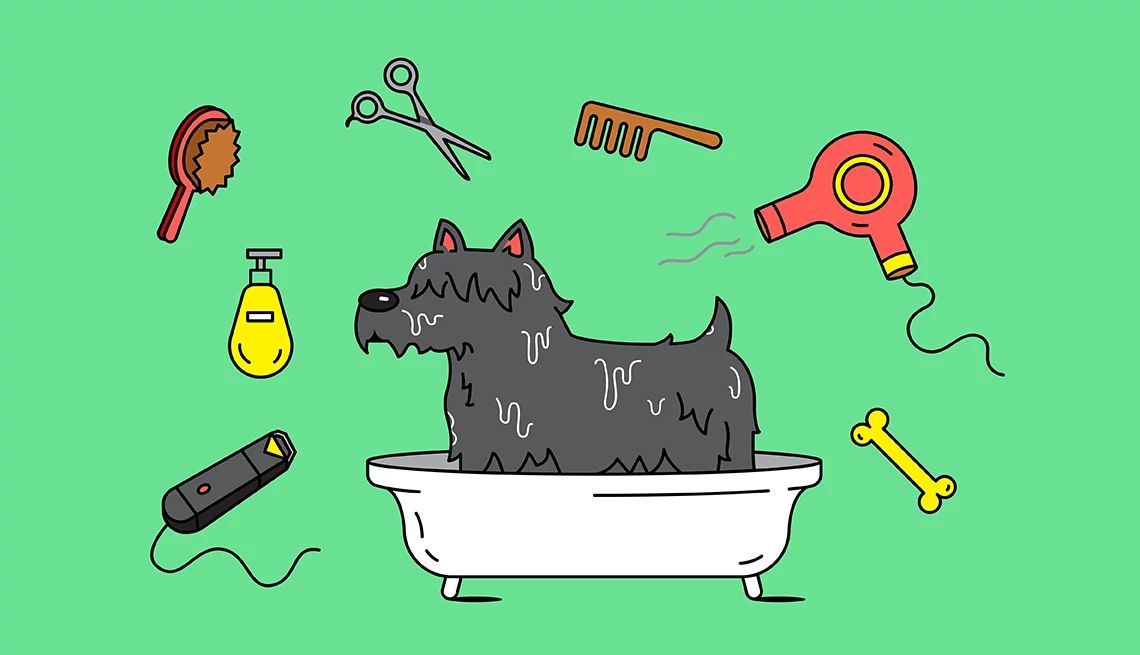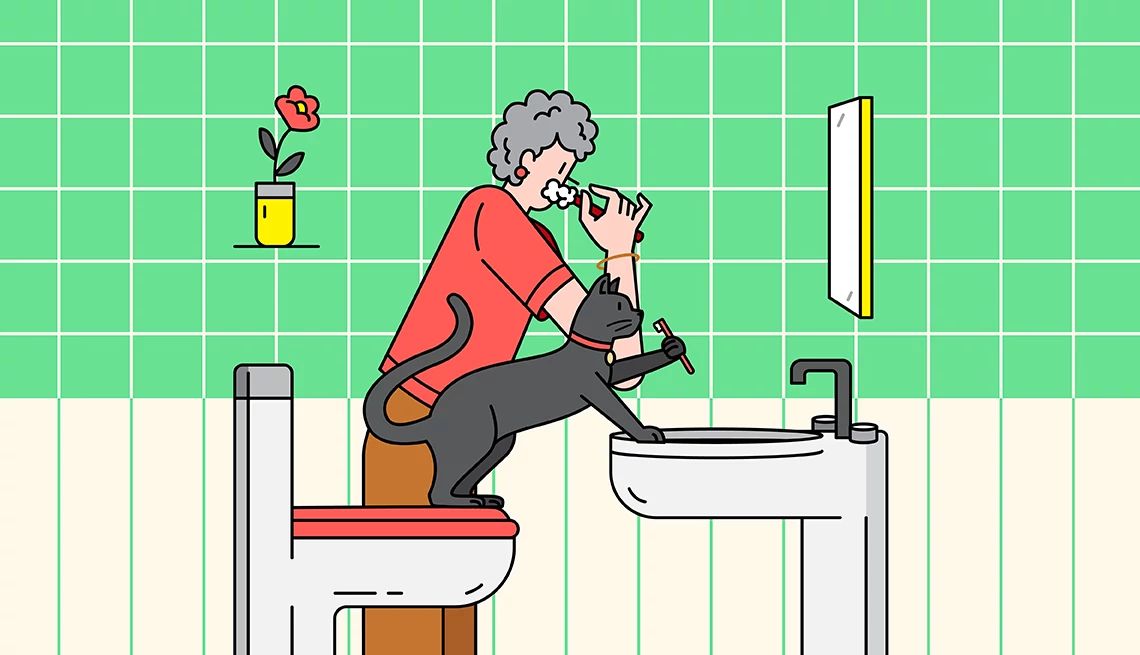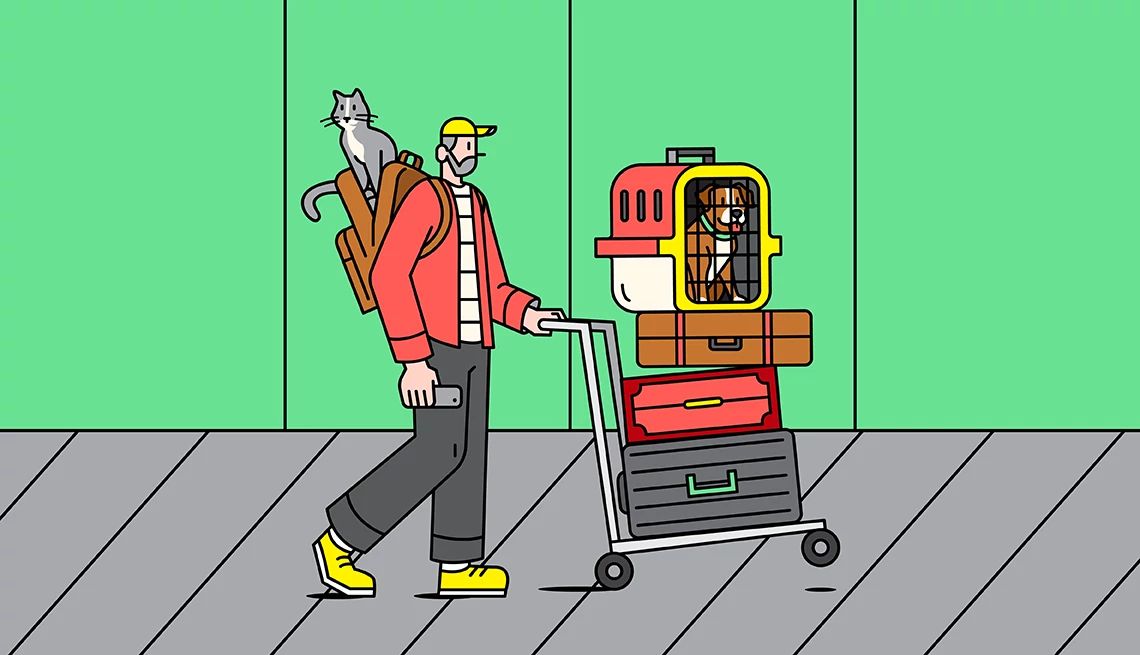AARP Hearing Center


For many older adults, pets aren’t just pets — they’re beloved family members. And whether it’s a bird, boa or border collie, owners often splurge on their animal companions like they would on a child or grandchild.
More than half of adults ages 50 to 80 own a pet, with many buying gifts not only for dogs and cats but also for fish, hamsters, reptiles and other beloved companions.
Pet owners are shelling out for more practical reasons too, including food, medical care and grooming. Put it all together and the spending adds up. Rover, a marketplace for pet services like dog walking and boarding, estimates the lifetime cost of care at around $34,550 for a dog that lives to age 10, and $32,170 for a cat that lives to 16.
Yet the return on pet investment can be high, and for many people, the relationship is priceless.
A 2024 American Psychiatric Association survey found that pets can provide a calming presence, help reduce stress and anxiety, foster physical activity, add structure to a schedule and increase social interactions with others. That’s especially important for older adults at risk of social isolation.
A separate 2025 American Pet Products Association (APPA) survey found that more Generation X and boomers report happiness, emotional support and stress relief from having pets than millennials or Gen Z.
Thankfully, you don’t have to siphon your retirement savings to care for your furry, feathery or scaly friend. With some smart strategies, you can reap the benefits of pet ownership without it taking a huge bite out of your bank account.
1. Assess how much you’re spending
“One of the biggest mistakes pet owners make is not creating a budget for their pet expenses,” says APPA’s CEO Peter Scott. “It’s easy to underestimate how much you’ll spend on your pet, especially in the first year.” Planning ahead is especially important if you’re retired and living on a fixed income.
The ideal time to build a budget is before you bring your new companion home. If you’ve had your pet for years and haven’t kept tabs on costs, you will still benefit by crunching the numbers for your expenses. Use a simple spreadsheet, deriving costs from your bank and credit card statements, or a budgeting app such as EveryDollar, YNAB (short for “you need a budget”) or Monarch.
Add in a cushion for unexpected costs: Nearly 3 out of 4 pet owners say they’ve faced unexpected expenses of more than $250, a 2025 Synchrony survey found. “Accidents happen, and even something seemingly small can lead to an unplanned emergency vet visit,” says Scott. “Being financially prepared means you can act quickly and get your pet the care they need.” His rule of thumb: Set aside an extra 20 percent on top of your expected expenses for the first year to account for surprises. After the first year, aim to have $500 to $1,000 in your dedicated pet emergency fund, depending on your pet’s age, breed and health history. “You may want to set aside even more if your pet has a chronic health condition,” Scott says.
2. Buy in bulk — but note expiration dates
Two words: stock up. “If you belong to a warehouse store like Costco, Sam’s Club or BJ’s Wholesale Club, see if they carry your preferred brands of food, litter and other supplies,” suggests consumer savings blogger Trae Bodge. “When you buy in larger quantities, the price per unit decreases.” Buying in bulk also means fewer trips to the store, which can be beneficial if you have mobility issues or limited transportation options.
Amazon, Target, Walmart and other retailers also sell certain pet products in large quantities. If lifting heavy bags is difficult for you, look into home delivery, or ask a friend or family member to help.
There are a couple caveats. Don’t buy in bulk if you lack proper storage, which could very well be the case if you’ve downsized your home. Also, check expiration dates, advises Brandi Hunter Munden, vice president of public relations and communications for the American Kennel Club. You could wind up wasting money if perishables go bad before you use them.
3. Don’t overfeed
Twelve percent of dog owners and 17 percent of cat owners say their veterinarian considers their pet obese, according to APPA. “Just because you buy food in bulk doesn’t mean you should feed it in bulk,” says Ann Hohenhaus, senior veterinarian and director of pet health information at the Schwarzman Animal Medical Center in New York City.
If you overfeed, you’ll not only spend unnecessary money but could also put your pet’s health at risk. “The porky pet is at greater risk of diabetes, arthritis, urinary tract disease and certain tumors,” Hohenhaus says.
If your pet is overweight, work with your vet to determine the right food and calorie intake, adds veterinarian Lori Bierbrier, senior medical director of community medicine for the eastern region of the American Society for the Prevention of Cruelty to Animals (ASPCA).
4. Consult your vet on high-end kibble
Quality pet food “does not need to be a boutique brand to be healthy,” says Bierbrier. Explore more affordable options, such as store brands, and look for products that meet the nutritional standards set by the Association of American Feed Control Officials (AAFCO). It’s best to consider the breed, age and special needs of your dog or cat and consulting your vet on whether the brand or brands you purchase are meeting those needs. Also, make sure to stay on top of recalls. To stay informed about pet food recalls, regularly check the U.S. Food and Drug Administration (FDA) website and the American Veterinary Medical Association (AVMA) website.
Thinking about making pet food from scratch? Think again, says Bierbrier: “It is very difficult to create a homemade diet that is nutritionally balanced, and it is often more expensive than store-bought foods.”


5. Learn basic grooming skills
Grooming costs can certainly add up, with the average dog grooming notching $85, Bark.com reports, though prices vary, depending on your pooch’s breed and size. However, “Pet owners can save the price of a visit to a groomer with regular nail-trimmings and brushings,” says Bierbrier. Routine brushing at home “will reduce the amount of [pet] hair floating around.”
Brushing between professional grooming sessions can also help prevent matting. That’s another cost saver, as matting can lead to pricier grooming appointments, notes APPA’s Scott. For felines, combing or brushing daily can help avoid hairballs.
To improve your grooming skills, check out the ASPCA’s dog grooming and cat grooming guides. YouTube also has helpful tutorials.
6. Use subscription services
You can shave costs and stop schlepping to the pet store by signing up for subscriptions that provide discounts on recurring purchases like food, treats and medications. “Many retailers offer 5 percent to 10 percent off when you set up auto-shipments,” says Scott. You can usually skip or pause those recurring purchases when you don’t need replenishment.
Amazon, as well as pet-focused shops such as Chewy, Petco and PetSmart, are among the retailers that offer discounts on auto-ship orders.
7. Explore senior discounts and loyalty programs
Take advantage of discount programs for older adults from pet retailers and brands. For instance, pet food maker Verus offers deals for customers ages 65 and older, and some stores offer deals during “senior appreciation days,” such as the last Tuesday or Thursday of the month.
Also, look into store loyalty memberships that provide perks, discounts and reward points that can reduce the cost of food, treats, toys and other purchases. “Many of the major pet stores have loyalty programs and deals,” says Hunter Munden. “Some pet food companies also have loyalty programs and coupons that are offered on their sites and via their apps.”






































































You Might Also Like
Why Older Dogs and Older Adults Are a Good Match
From preventing loneliness to being easier to train, a senior dog can be an older adult’s furry best friendAARP Smart Guide to Pet Adoption
33 tips for finding a new furry best friend after 50
I Admit It: My Dog Drives Me Crazy
Confessions from a first-time pet owner